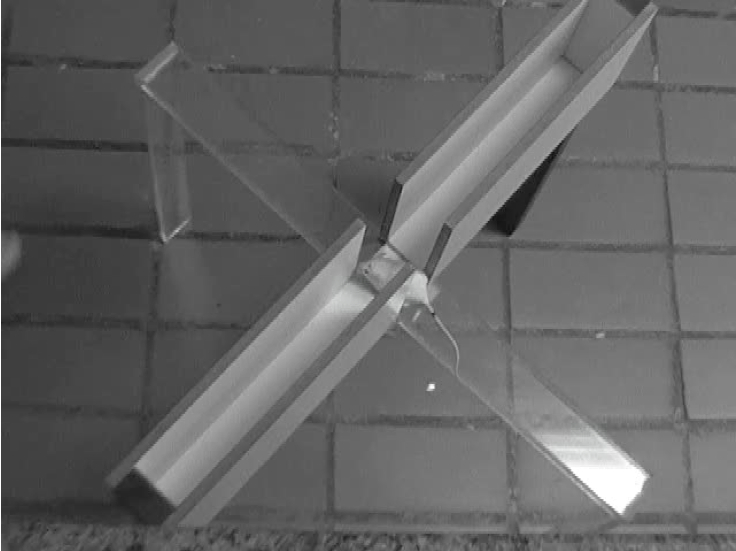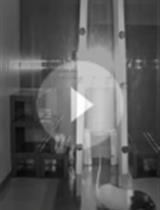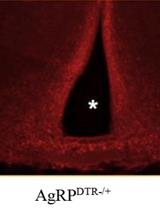- EN - English
- CN - 中文
Elevated Plus Maze Test to Assess Anxiety-like Behavior in the Mouse
高架十字迷宫试验评估小鼠的焦虑样行为
发布: 2014年08月20日第4卷第16期 DOI: 10.21769/BioProtoc.1211 浏览次数: 30065
评审: Soyun KimAnonymous reviewer(s)
Abstract
The elevated plus maze task is a simple method to assess anxiety-like behaviors in rodents. This version describes the procedure used in mice. However, the protocol may also be applied to rats, considering a proportionally larger apparatus (arms: 10 x 50 cm; height: 55 cm). Briefly, the test is performed on a plus-shaped apparatus with two open and two closed arms. The animal is allowed to freely explore the maze for 5 min while the duration and frequency of entries into open and closed arms is recorded. The task is based on an approach-avoidance conflict, meaning that the animal is faced with a struggle between a propensity to explore a novel environment and an unconditioned fear of high and open spaces. Consequently, an anxiety-like state is characterized by increased open arm avoidance, compared to control animals. On account of being a very popular test, there can be considerable variations in the procedures applied across different laboratories. Here we provide a working protocol that has been able to detect both anxiogenic and anxiolyitic drug effects under the specified conditions. Protocol originally published in (Leo et al., 2014).
Materials and Reagents
- Laboratory-bred plus maze-naïve mice
Note: Mice housed in groups of 4-5 per cage, kept in an environment with controlled temperature (around 23 °C) and humidity under a 12-12 h light-dark cycle with food and water ad libitum.
- Paper towels and 70% ethanol for cleaning
Equipment
- Elevated Plus maze (either customized apparatus or commercially available one)
- Video camera (placed directly above the maze)
- Indirect white light
- Digital lux meter (Instrutherm, Mastech, Dr. Meter or similar)
- Digital chronometers for manual analysis, or computer software (Any-maze, Ethovision or others) for automated analysis
Note: In our laboratory, we use a custom made plus-shaped maze sized for mice (Leo et al., 2014), which is elevated 50 cm above the ground, and consists of two opposite closed arms, two opposite open arms and a central square of 5 cm sides (see image below). The closed arms measure 30 x 5 cm and are constituted of white-painted wood, as are the 15 cm high walls that enclose the arms. Glossy painting should be avoided as to prevent excessive glare, thus a matte finish is recommended. The open arms measure 30 x 5 cm and are made of transparent acrylic; a 0.3 cm high transparent acrylic railing prevents animals from falling while exploring the open arms. The apparatus can be disassembled and moved to and from the experiment room where it is set up for use. Wood-made apparatuses covered with wood lacquer, painted in black or transparent Plexiglas apparatuses are also frequently found. Commercially available apparatuses, such as those from Stoelting Co. or Panlab S.L.U., are recommended as alternatives. The room illumination and apparatus light reflection strongly affect the elevated plus maze test. In our laboratory, a Samsung Flashcam digital camcorder is used, as it is more appropriate for posterior off-line analysis. One should always run pilot experiments to establish reliable baseline parameters and standardize the experimental environment before starting the experimental manipulations (drugs, procedure, transgenic animals, etc.).

Figure 1. Plus-shaped maze
Software
- Automated computer software (Any-maze, Ethovision and others)
Procedure
文章信息
版权信息
© 2014 The Authors; exclusive licensee Bio-protocol LLC.
如何引用
Leo, L. M. and Pamplona, F. A. (2014). Elevated Plus Maze Test to Assess Anxiety-like Behavior in the Mouse. Bio-protocol 4(16): e1211. DOI: 10.21769/BioProtoc.1211.
分类
神经科学 > 行为神经科学 > 实验动物模型 > 小鼠
神经科学 > 行为神经科学 > 学习和记忆
神经科学 > 神经系统疾病 > 动物模型
您对这篇实验方法有问题吗?
在此处发布您的问题,我们将邀请本文作者来回答。同时,我们会将您的问题发布到Bio-protocol Exchange,以便寻求社区成员的帮助。
Share
Bluesky
X
Copy link












